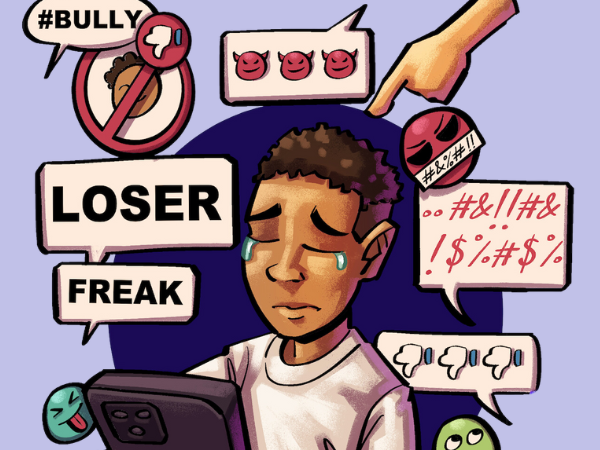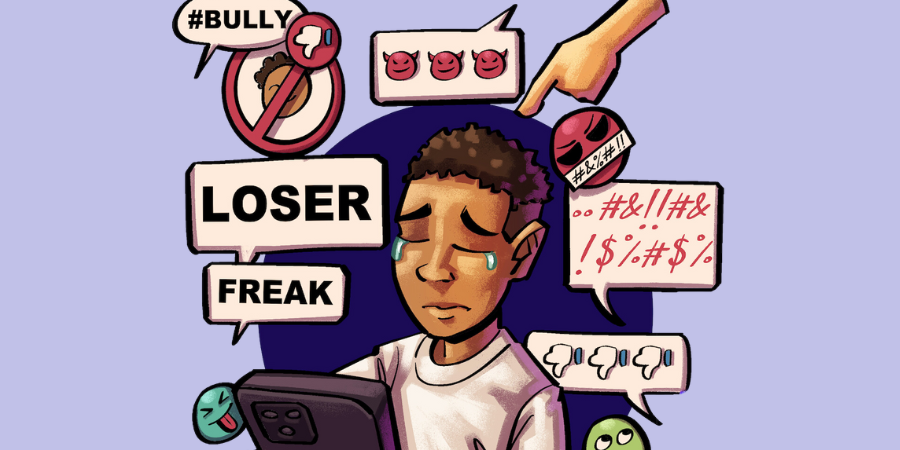Cyberbullying is the use of technology to harass, threaten, embarrass, or target another person. Online threats and mean, aggressive, or rude texts, tweets, posts, or messages all count. So does posting personal information, pictures, or videos (without the person’s consent), designed to hurt or embarrass someone.

“Nine out of ten times, cyberbullying acts as a catalyst for physical altercations among our youth. To decrease these incidents, society must provide more accessible and varied after-school activities for young people. Then they can channel their energy into positive behaviours instead of negative ones,” declared Inspector Felix Richards, a well-known Community Police Officer.
His assigned area includes neighbourhoods in ‘Cul de Sac’, where most of the secondary schools of St. Maarten are located. “As a Community Police Officer, my job is to be the ‘spider in the web’ connecting the Police Department to – and working with residents, schools, community centres, businesses, government, and other stakeholders – on any disruptive or criminal issues that might arise.”
Officer Richards is always available via phone in the event of an emergency or situation that requires his assistance. He uses WhatsApp groups to stay informed and connected with residents, and to stay updated about any happenings in the neighbourhood. In addition, he manages a WhatsApp group for all the schools in his area. Generally, he is in contact with school administrators for various reasons, including incidents like school fights, or to involve the Police Department in organising preventive measures.
One of the preventative measures includes providing presentations to students about issues the Police Department encounters among the youth. This includes topics such as substance abuse, fighting, sharing of sensitive information, and cyberbullying. “Nine out of 10 times, the physical altercations between young people are prefaced with bullying or calling one another out online.”
“Usually, young people will first have some disagreement, perhaps even friends initially. Then, one of them decides to post something online to embarrass the other person or prove they are right about something amongst their peers. This can then escalate and end up in a physical scuffle or more serious fight,” explains Richards about how he has encountered cyberbullying.
If a school fight has occurred, the schools initially handle the incident ‘in-house’ based on their policies. If the fight is grievous or if the young people involved have been involved in multiple fights, school administrators will often ask Officer Richards to sit in during the discussions on how to handle the fight. Filing reports and legal action can be taken, depending on the circumstances of the fight; threats made, frequency, if there were weapons involved, overall severity, etc.
Officer Richards shares that though “the process of handling in-person bullying and cyberbullying are similar, the long-term consequences can be more serious.” He also tries to imprint this on the young people he speaks to during his presentations: “I want them to realise that whatever they post online is instantly shared with the world and is forever. This also means that when they post something defamatory about a peer, this can have long-term consequences for this person.”
“Instead of just doing a presentation, I like to role-play situations and encourage discussions so they understand better how it feels to get bullied. In these sessions, you get different emotions from students; some get very emotional or shut down, likely because they have either been involved with bullying someone or been bullied by someone. Children increasingly express themselves online, but their home environment doesn’t always teach them how to do this responsibly. I’ve also encountered adults that bully others online.” Officer Richards also acknowledges that though these educational presentations and discussions are essential as preventative measures, “some young people are dealing with a lot at home and need more support such as counselling and psychological support.”
The Police Department is happy to report that they are working closely with the schools and this collaboration has led to positive changes in some of the schools’ policies. Officer Richards shares, “I am especially proud to say that one of the schools has now implemented a zero-tolerance policy for cyberbullying.”
When asked what can be done to prevent students from participating in cyberbullying and school fights, Officer Richards advises that primary and secondary schools include preventative information into their curriculum to include online dangers, “especially with these fast-changing technological advancements”.However, what he thinks will make the most significant difference is investing in after-school activities for young people: “I recall taking out a few troubled students for a week-long program, visiting the police department, fire department, etc. This thirteen-year-old had a big mouth the first day, and an even bigger mouth the second day. On the third day, we took them to an activity at CrossFit. This youngster transformed for those hours, taking the lead, encouraging his classmates, and being competitive in a good way. He just needed an outlet he loved.”
“The reality is that there are not enough positive outlets for young people. Our society needs to have more accessible after-school activities that support youth in developing their varied passions. When kids finish school at 1:00 pm, they should have an afternoon activity right after; then they go home to do homework and sleep. When someone is busy with their passion, they don’t have the time or energy to put into negative behaviours.”
Download our poster on protecting children from cyberbullying on our downloads page.




